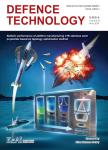Real-time prediction of projectile penetration to laminates by training machine learning models with finite element solver as the trainer
Real-time prediction of projectile penetration to laminates by training machine learning models with finite element solver as the trainer作者机构:Department of Aerospace Engineering and Engineering MechanicsUniversity of CincinnatiCincinnatiOH 45219USA
出 版 物:《Defence Technology(防务技术)》 (Defence Technology)
年 卷 期:2021年第17卷第1期
页 面:147-160页
核心收录:
学科分类:08[工学] 0806[工学-冶金工程] 0817[工学-化学工程与技术] 0826[工学-兵器科学与技术] 082603[工学-火炮、自动武器与弹药工程] 0805[工学-材料科学与工程(可授工学、理学学位)] 0802[工学-机械工程] 0703[理学-化学] 0701[理学-数学] 0801[工学-力学(可授工学、理学学位)] 0702[理学-物理学]
主 题:Finite element simulations Machine learning Neural networks Impact analysis Protective laminates Projectile Decision tree
摘 要:Studies on ballistic penetration to laminates is complicated,but important for design effective protection of structures.Experimental means of study is expensive and can often be dangerous.Numerical simulation has been an excellent supplement,but the computation is time-consuming.Main aim of this thesis was to develop and test an effective tool for real-time prediction of projectile penetrations to laminates by training a neural network and a decision tree regression model.A large number of finite element models were developed;the residual velocities of projectiles from finite element simulations were used as the target data and processed to produce sufficient number of training samples.Study focused on steel 4340tpolyurea laminates with various configurations.Four different 3D shapes of the projectiles were modeled and used in the training.The trained neural network and decision tree model was tested using independently generated test samples using finite element models.The predicted projectile velocity values using the trained machine learning models are then compared with the finite element simulation to verify the effectiveness of the models.Additionally,both models were trained using a published experimental data of projectile impacts to predict residual velocity of projectiles for the unseen samples.Performance of both the models was evaluated and compared.Models trained with Finite element simulation data samples were found capable to give more accurate predication,compared to the models trained with experimental data,because finite element modeling can generate much larger training set,and thus finite element solvers can serve as an excellent teacher.This study also showed that neural network model performs better with small experimental dataset compared to decision tree regression model.



